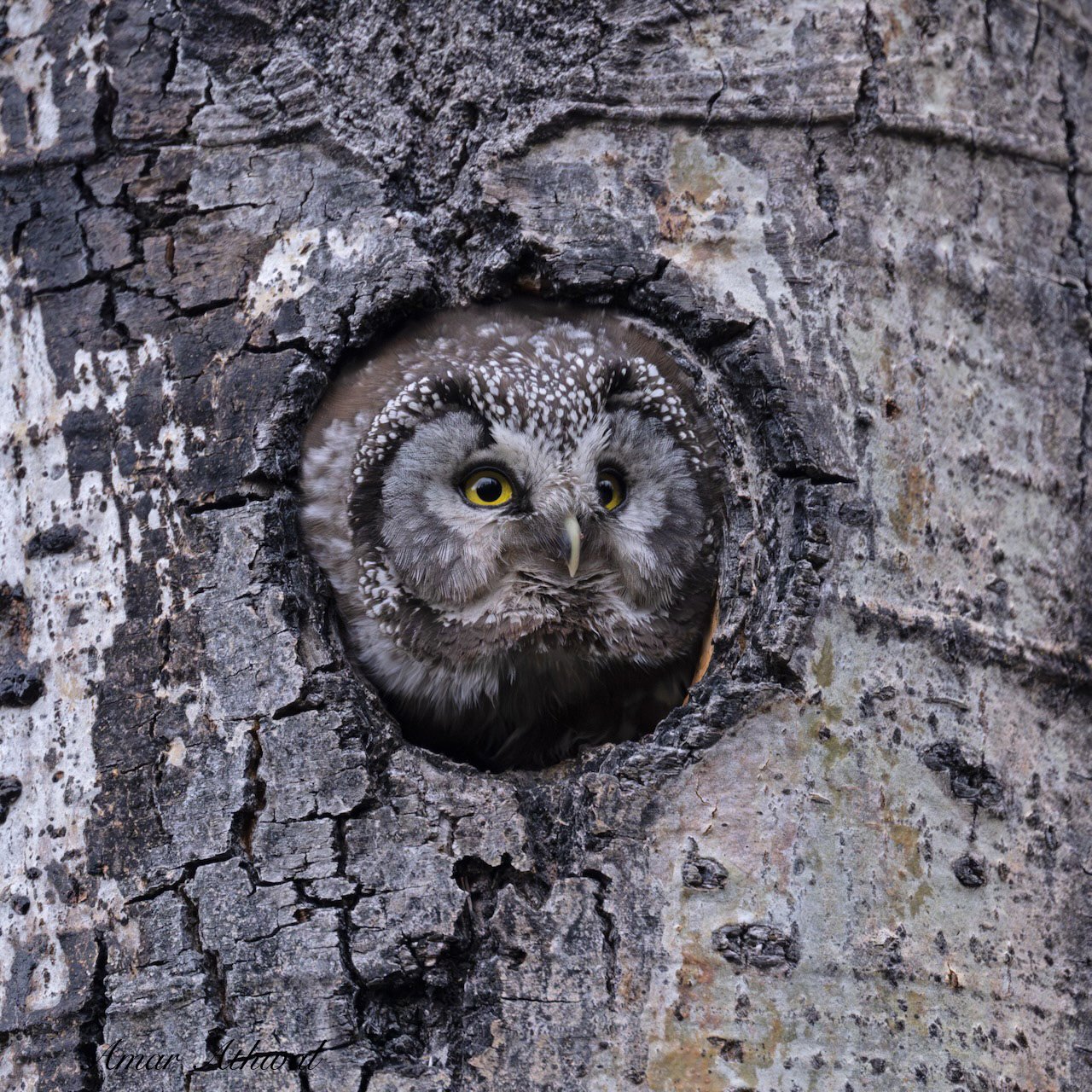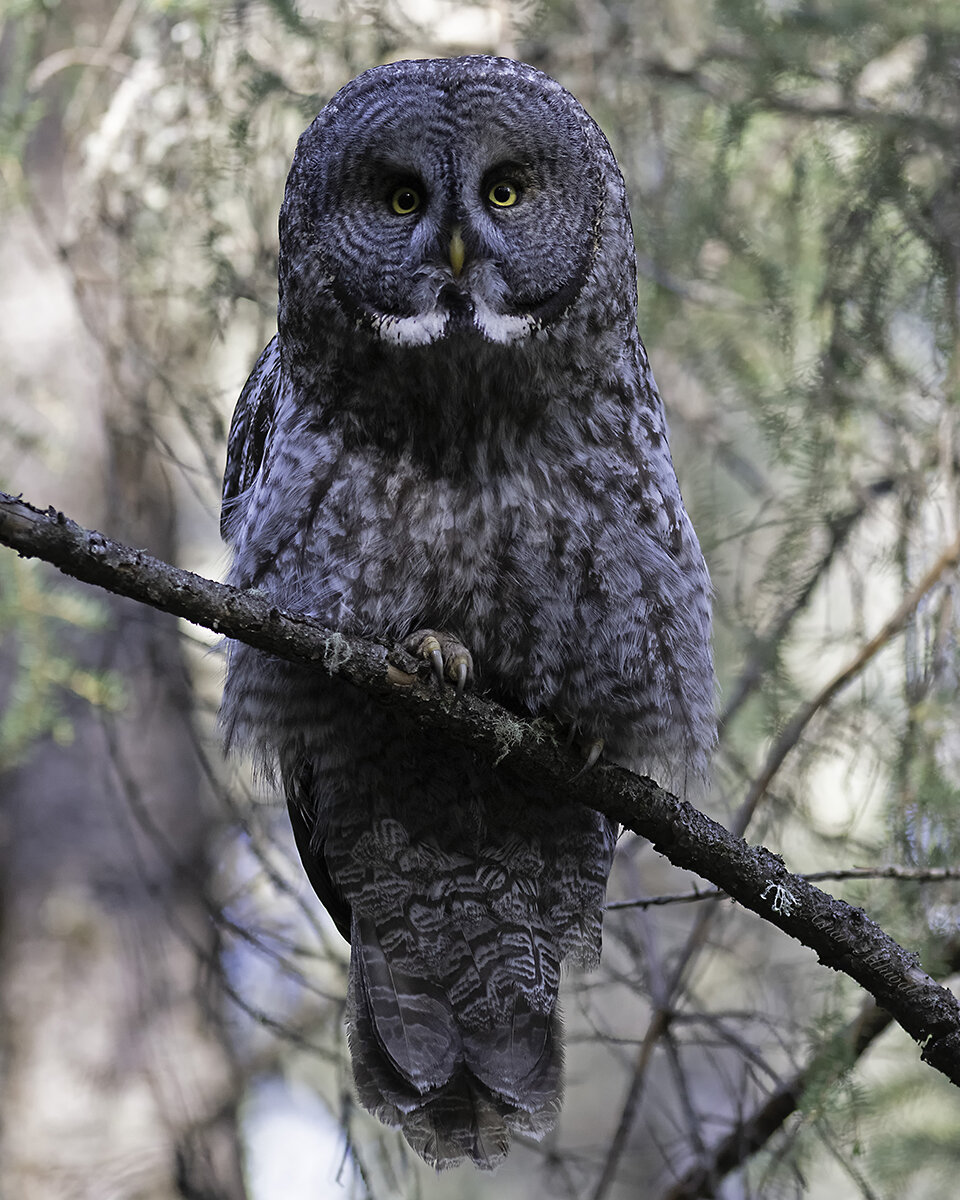At night, the Boreal Owl becomes active in the spruce and fir forests, hunting for small mammals and birds with its talons. If you're out there, you might hear its hooting sounds from late winter through spring. Boreal Owls spend the entire year in the boreal forest, only migrating south when food is scarce. Like other owl species, the female is larger than the male, but with Boreal Owls, the size difference is especially pronounced. Sometimes the female can be twice as heavy as the male. Additionally, Boreal Owls have asymmetrical ear openings, with one opening positioned higher than the other. This asymmetry helps the owl better determine the direction of sounds, which is crucial for hunting.
Boreal Owls tend to be solitary. Even during the breeding season, mated pairs do not roost together and only come together at the nest site during courtship and feeding. The male courts the female with food and calls, feeding her for up to three months before nesting, and continues to bring food throughout the nesting period. Due to their nocturnal habits, Boreal Owls are not commonly encountered, making it a special occasion when I spotted one a few months ago.





